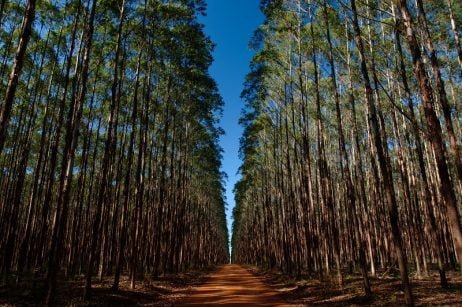Renewable Forests
 A Planted forests, such as eucalypt, pine and other rapid-growth species adapt very well to a wide range of soil and climate conditions. In Brazil, this practice has been developed for over one hundred years in order to supply siderurgy and alloy iron plants, the paper and cellulose industry, the furniture industry, among others. What’s most important is that silviculture, among its several benefits, is a rational alternative against the devastation of native forests.
A Planted forests, such as eucalypt, pine and other rapid-growth species adapt very well to a wide range of soil and climate conditions. In Brazil, this practice has been developed for over one hundred years in order to supply siderurgy and alloy iron plants, the paper and cellulose industry, the furniture industry, among others. What’s most important is that silviculture, among its several benefits, is a rational alternative against the devastation of native forests.The eucalypt planted by Aperam BioEnergia is used in the production of charcoal. Being the product of a sustainable production process, it’s considered a clean and renewable energy source.
These are the main benefits of renewable forests:
- They reduce the impact on native vegetation and protect the fauna within the company’s operation area;
- They recover depleted soils by depositing biomass and controlling erosion. Eucalypt demands low levels of mineral nutrients and adapts well to acid and low fertility soils;
- They provide an organic cover to the soil by depositing leaves and thin branches, contributing to structural improvement;
- They help regulating the quality and flow of hydric resources;
- They consume water in the same proportion as other forest species, but are more effective in using the water for biomass production;
- They absorb a large quantity of CO2 from the atmosphere, contributing against greenhouse gas effects and consequently against global warming;
- They present a higher yield by area unit, occupying smaller territorial surfaces;
- They represent a source of economic and social improvements by generating jobs, maintaining countryside populations and mobilizing several social responsibility actions.








